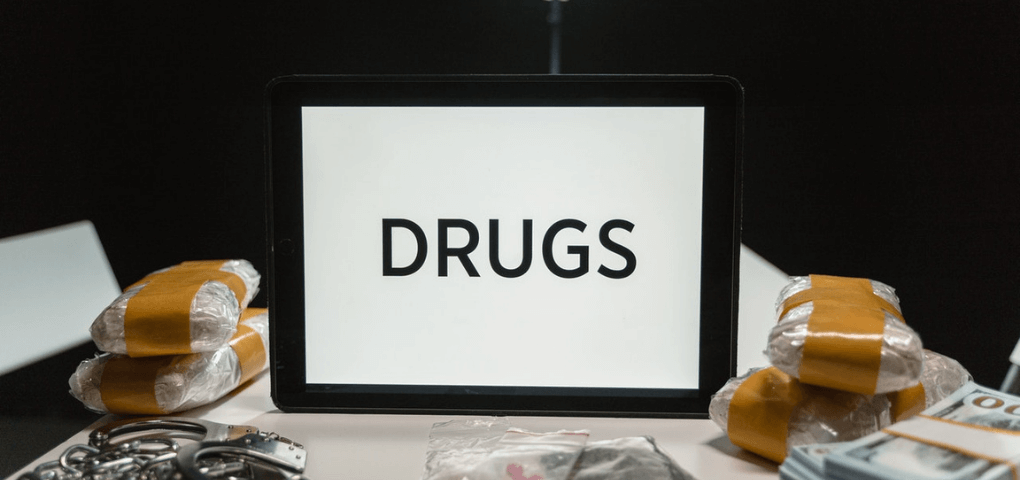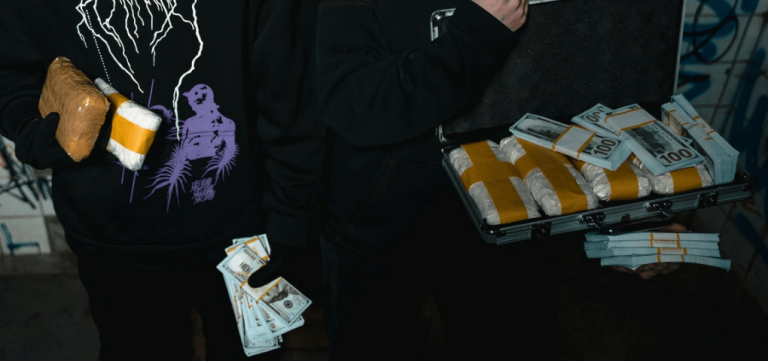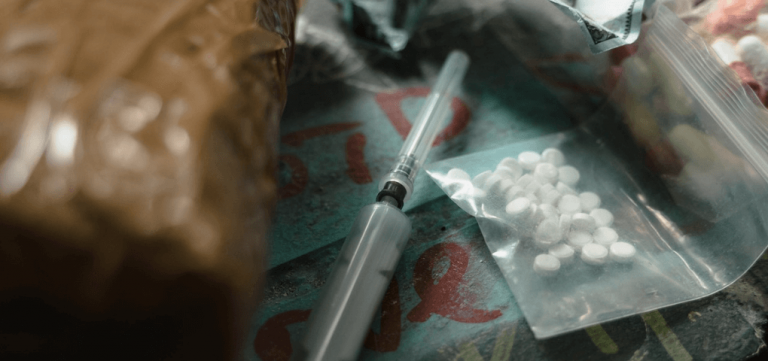
20 Telling War on Drugs Statistics
Posted on | by Jenifer Kuadli
It has been 50 years since President Richard Nixon envisioned a country free of addictive and dangerous substances and declared war against illicit drugs.
And still, the nation is divided on how it should deal with the problem. What is more, public sentiment seems to lean slightly towards treating drug use as a health issue instead of criminal activity.
Many people are now seeking to end this longstanding war on drugs, or at the very least, amend the policies.
Proponents of these movements point to the ill effects of the campaign, as evidenced by the war on drugs statistics. In addition, some believe it to be prejudiced towards the country’s minorities.
This article features some facts and figures about the war on drugs and attempts to determine if there’s truth to the people’s claims opposed to the campaign.
Top Drug War Facts (Editor’s Choice)
- The latest total federal spending on drug control in the US has reached over $40 billion.
- Decriminalizing drug possession will not end the country’s problem of mass incarceration.
- Black Americans are three times more likely to get arrested for marijuana possession than white Americans.
- Drug incarceration shows extensive racial disparity among Blacks, Latinos, and White Americans.
- States that legalized or decriminalized marijuana have fewer arrests.
- There are over 30,000 gangs in the US involved in drug trafficking and other crimes.
- The DEA seized tons of methamphetamine, enough to give one dose to every person in the US and Mexico.
War on Drugs Facts and Statistics
1. Marijuana is the most seized type of drug on the US border.
(Statista)
Marijuana was the most seized type of drug during the last fiscal year, according to the latest drug seizure statistics of the United States Border Patrol. The Patrol had 5,710 instances of confiscation of the substance nationwide.
The second most seized drug type, methamphetamine, didn’t come close to the number of marijuana seizures. Data reports only 1,304 instances of confiscation across the country.
2. The latest total federal spending on drug control in the US has reached over $40 billion.
(Statista)
The country’s war on drugs has reached its fiftieth-year mark. This milestone calls into question several facts about the war on drugs, particularly the total federal spending to control drug use.
Data suggest an upward trend in the federal budget for drug control since 2014 when the budget was over $25 billion.
Only seven years later, spending has reached over $40.3 billion. However, it’s worth noting that more than half of this budget is allegedly allocated to the treatment of substance use disorder.
3. More than half of Americans now favor decriminalization of drug offenses.
(Cato Institute)
Recent statistics on the war on drugs show waning support from Americans for treating drug use as a criminal activity.
Instead, about 55% of Americans are in favor of recategorizing drug offenses from felonies to civil infractions. If this comes to fruition, drug use and possession will be treated similarly to traffic violations.

United States War on Drugs Statistics
4. Decriminalizing drug possession will not end the country’s problem of mass incarceration.
(Prison Policy)
Some people believe that letting go of non-violent drug offenders and decriminalizing drug possession are keys to ending mass incarceration.
While it’s true that law enforcers make over 1 million drug possession arrests every year, that’s just a fraction of those impacted by the criminal justice system.
The war on drugs incarceration statistics show that one in five incarcerated Americans are arrested for drug possession. But this just means that four out of five incarcerated people are locked up for something more or less severe.
Ending mass incarceration requires more than just releasing drug possession offenders and decriminalizing drug possession.
5. Black Americans are three times more likely to get arrested for marijuana possession than white Americans.
(The Hill)
America’s war on drugs has done more harm than good to the country. This is because policies and law enforcers have mainly been biased toward minorities.
For example, war on drugs race statistics show that Black Americans are 3.73 times more likely to get arrested for marijuana possession than white Americans.
This would be acceptable if Blacks used marijuana at higher rates. But that’s not the case since there’s no disparity in the rate of marijuana use between the two races.
6. Drug incarceration shows extensive racial disparity among Blacks, Latinos, and white Americans.
(CNBC)
The war on drugs started with an excellent objective, which was to eradicate illicit drug use. However, fifty years after the campaign’s inception, it has instead become a mechanism to demonstrate massive racial disparity.
The US war on drugs statistics show that nearly 80% of people in federal prisons and 60% in state prisons are either Black Americans or Latin Americans.
These are surprising figures considering that Black Americans make up only 13.4% of the population.
7. Law enforcers carry out over 500,000 marijuana arrests every year.
(Drug Policy)
The country’s war on drugs has reached 2.3 million incarcerated Americans. A significant fraction of this number was incarcerated for marijuana possession and use.
Based on the war on drugs statistics and data, law enforcers make marijuana arrests every 58 seconds. So it’s not surprising that every year, they carry out over 545,000 arrests.
8. The DEA’s campaigns in 2020 resulted in the disruption of major drug trafficking activities with over 5,000 arrests nationwide.
(DEA)
Drug use has been increasing over the past few years despite the efforts of the government to eradicate this problem.
Moreover, the DEA admits that the stress caused by the pandemic has only made things worse. For instance, overdose deaths from methamphetamine increased by 35% in 2020.
In response, the DEA launched several campaigns to mitigate the rising problem. According to drug arrests statistics in 2020, these campaigns resulted in the confiscation of tons of illicit drugs and the arrests of thousands of individuals, 73 of whom were healthcare professionals.
In addition, the DEA believes this scourging prevented the rise in violence since most drug-related violence is closely connected with drug trafficking.
9. States that legalized or decriminalized marijuana have fewer arrests.
(ACLU)
If the drug arrests statistics published in 2020 categorized by state show any indication of a reduced marijuana arrest rate, it’s because there were significant declines.
These downward trends for some states weren’t the result of rigid enforcement of marijuana drug laws but relaxing policies.
War on drugs stats for marijuana arrests show that States, where marijuana is entirely illegal, have an average arrest rate of 280 per 100,000 persons.
In contrast, states that decriminalized marijuana have 216 per 100,000, whereas states where marijuana is fully legal have only 25 arrests per 100,000.
10. Law enforcers in the US made over 1.5 million arrests for drug law violations in just a single year.
(Drug Policy)
Despite the efforts of the government to curb illicit drug use, the war on drugs incarceration rates is alarmingly high. Over 25% of imprisoned Americans are serving time for drug law violations.
This shouldn’t be surprising when law enforcers make over a million drug arrests in a given year. In the most recent year for which data is available, law enforcers report over 1.5 million drug-related arrests.
And out of this figure, only 150,229 were for selling drugs.
11. According to war on drugs facts, the US spent approximately $1 trillion on its campaign against drugs.
(CNBC)
Critics of the country’s war on drugs believe criminalizing illegal substance use does little to curb illicit drug usage. In fact, both liberals and conservatives think it’s doing more harm than good.
From an economic standpoint, the campaign is proving to be an expensive fight.
According to researchers and the war on drugs cost statistics, the federal government has already spent over $1 trillion on drug enforcement in the last 50 years. Yet, drug use is climbing at a faster rate than ever.
12. America’s war on drugs has made little progress in reducing illicit drug usage in the country.
(CNBC)
When President Nixon launched the campaign against illicit drug use, the goal was to eradicate the problems caused by illegal substances entirely.
However, data suggest that not much has changed since enacting laws and policies against the illicit use of drugs.
In fact, the war on drugs and failure statistics show that usage among Americans starting from the age of 12 and older increased by 13%.
Further, over 90,000 people died of a drug overdose in the US in 2020 alone. This is a significant increase from the 2019 drug overdose death toll of 70,630.
13. The US experienced a spike in drug overdose in the past year.
(NPR)
Apart from violence, drug overdose is among the many problems illicit drugs bring to the country. Pandemic-related stressors and problems further aggravate this problem.
According to statistics on the war on drugs, over 93,000 people died from a drug overdose in a single year. That’s a 30% increase from the previous year’s figures.
14. Oregon is the first state to decriminalize drug use and possession.
(The Hill)
Drug law reforms are in the works in the US as more citizens believe in reducing possession to a civil offense.
Oregon was the first state to embrace the changing tides in the nation’s campaign against drugs as it decriminalized personal use and possession, reducing the penalty to a maximum $100 fine.
Based on the previous war on drugs stats and numbers, this act will avoid more than 3,000 arrests per year for possession of illicit drugs.
In addition, this groundbreaking move from Oregon could be the start of reorienting the government’s response to drugs as a public health issue rather than a felony.
15. The DEA seized tons of methamphetamine, enough to give one dose to every person in the US and Mexico.
(DEA)
The DEA is working round-the-clock to eliminate dangerous illicit drugs nationwide. The agency’s efforts are more evident in the 2020 war on drugs statistics that show a significant number of confiscations.
In its Operation Crystal Shield campaign, the DEA coordinated two seizures that totaled 2.6 tons of methamphetamine.
This much quantity can provide every single person in the US and Mexico with a dose of methamphetamine.
16. The majority of drug-related federal prisoners are serving time for drug trafficking, according to drug incarceration statistics.
(Drug Policy Facts)
The most recent statistics on drug incarceration show that 46% of prisoners detained in federal prisons are serving time for drug offenses.
Further, about 99% of these drug offenders were arrested and charged with drug trafficking.
17. There are over 30,000 gangs in the US involved in drug trafficking and other crimes.
(DEA)
Drugs and crime often go hand in hand. Criminals involved in drug distribution are usually the main players in other criminal activities like extortion and contract killings.
This is why the DEA is continuously working to identify and put these threats behind bars.
However, the agency needs to put in more effort. According to drug crime statistics of 2020, over 30,000 gangs are still operating nationwide.
Almost all of these gangs aren’t just involved in drug trafficking but violent crimes as well.
18. Proponents of drug courts believe it’s an effective way of administering justice and rehabilitation.
(Prison Legal News)
The problem with the country’s war on drugs is that it’s using up a significant chunk out of taxpayers’ money. So we need to pay attention to some of the war on drugs facts, especially if it concerns public funds.
Apparently, it costs a staggering $55,000 a year to send someone to prison. That’s a lot of money for non-violent crimes such as drug use or possession.
This is one of the reasons why some people have become advocates of drug courts. These alternative sentencing measures offer defendants the option to continue with court proceedings or enroll in a recovery program.
Districts that have drug courts report a decrease in crime rates between 8% and 26%.

Global War on Drugs Statistics
19. Harsh drug policies have ushered the increase of violent crimes worldwide.
(Open Society Foundations)
When governments across the world initiated war on drugs, they expected to create a drug-free world. But decades into this longstanding conflict seemed to have done little to reduce cases.
In fact, war on drugs and violence statistics show us that not only did lawmakers fail in their mission, but their harsh policies also appeared to have increased drug-related violence.
In Mexico, approximately 300,000 people died, 40,000 disappeared, and 330,000 were displaced in its 16 years of war on drugs.
Meanwhile, over 29,000 people became victims of extrajudicial killings in the Philippines since the war on drugs started in 2016.
20. The number of drug users in Africa is expected to increase by 40% by 2030.
(UNODC)
When considering the effectiveness of the world campaign against illicit drugs, the most common question is ‘has the war on drugs reduced drug use globally?’ Based on current trends, the answer is likely to be no.
All regions, except Europe, are expected to see growth in the number of drug users.
Mainly, Africa will experience the highest increase from 60 million drug users aged 15 to 64 to 86 million users in the same demographics.
Conclusion
Statistics on the war on drugs show several figures that lead us to conflicting conclusions. But there is one fact that appears to be consistent. The weight of the war against drug spending is heavy on taxpayers’ money.
The problem is that the government has little to show since drug use is still following an upward trend. This forces us to deduce that the current policies and the methods we implement aren’t working.
It may be time to amend the existing laws and create new policies that will work better.
FAQ
The war on drugs started with President Richard Nixon’s vision to free the country from the ill effects of harmful and addictive drugs. He declared the use of these drugs as the country’s ‘public enemy number one.’
Under his leadership, the government created policies and laws that criminalized the use of these substances. The term and the campaign were then adopted by different countries worldwide.
Although it’s difficult to determine what percent of incarcerated Americans are drug offenders because of displacement and movement, the data suggest it’s 20%.
This means that about one in five prisoners serving time is arrested because of drug offenses. Most people use this data to infer that decriminalizing drugs will not answer the country’s problems with mass incarceration.
Statistics show that the incarceration rate in the US has grown by 500% since the beginning of President Richard Nixon’s campaign against drugs.
Some researchers attribute this astounding growth to the policies enacted due to Nixon’s war on drugs. Law enforcers arrested people for use and possession at an astonishing rate.
The most recent year for which data is available reports more than 1.5 million drug arrests.
A significant percentage of this number are poverty-stricken and cannot defend themselves or post bail, which leads to the rising number of incarcerated Americans.
The war on drugs poses several consequences: excessive imprisonment, mass incarceration, and costly law enforcement.
The methods with which the government fights against the use and sale of illicit drugs are designed to treat the problem through punitive punishment.
Unfortunately, this leads to higher sentencing and more extended imprisonment for arrested individuals, which leads to mass incarceration.
Enforcing drug law policies is also costly and heavy on taxpayers. For example, the US spends approximately $55,000 a year to send and keep an offender in prison.
When President Richard Nixon started his campaign against drugs, the goal was to eradicate dangerous and addictive substances in the country. He believes that drugs are the nation’s public enemy number one.
However, 50 years after his declaration of war, the use and sale of drugs are still rampant, leading people to question the effectiveness of the war on drugs.
The war on drugs has impacted the criminal justice system, mainly law enforcement, judiciary, and corrections levels.
Because of the campaign, the US now has stringent laws and policies on drug use and possession.
According to war on drugs statistics, this resulted in the arrests of millions of Americans who are in possession of drugs for personal use.
In fact, about one in five incarcerated prisoners are serving time because of drug offenses.